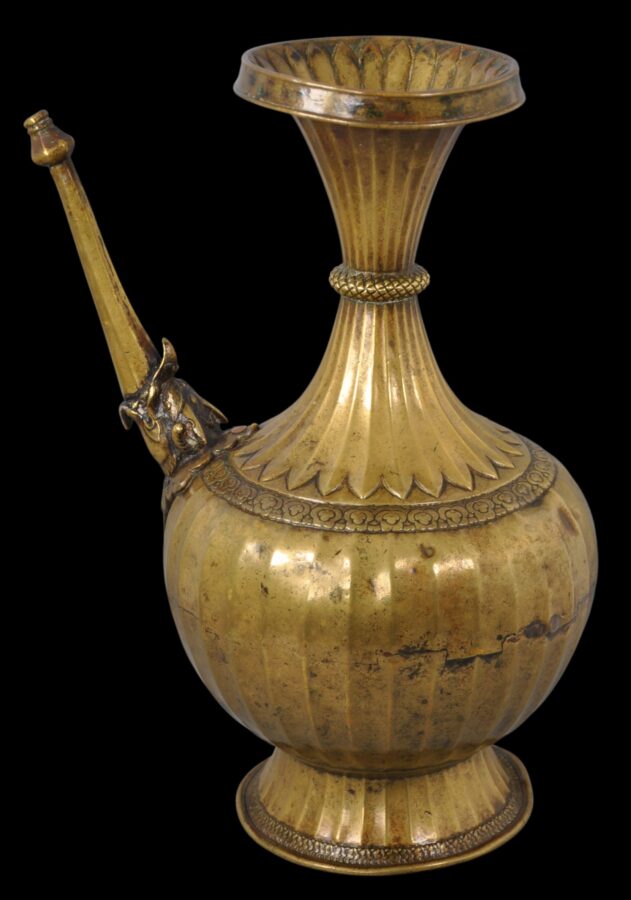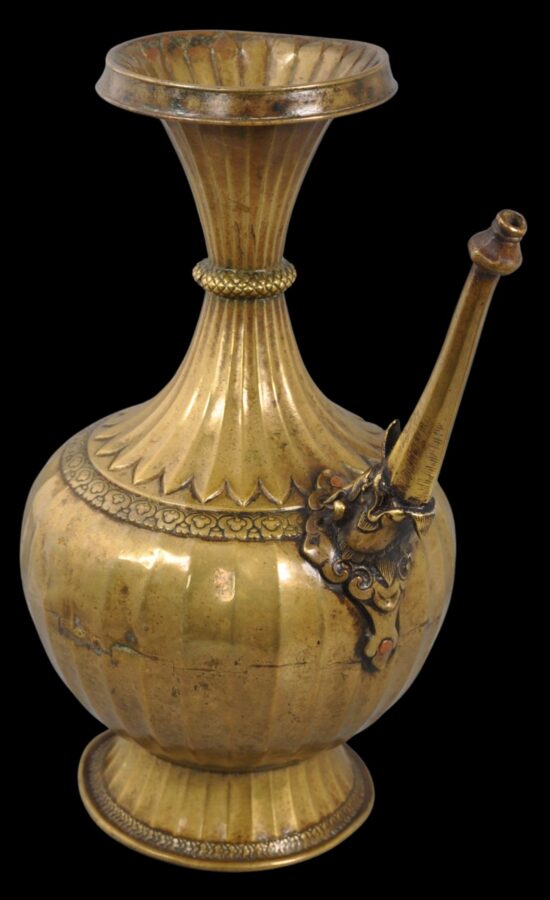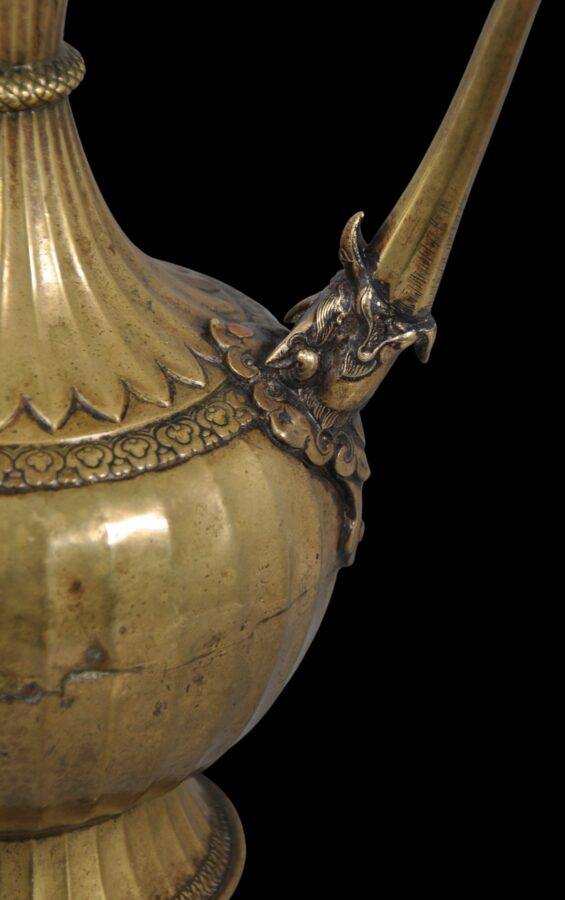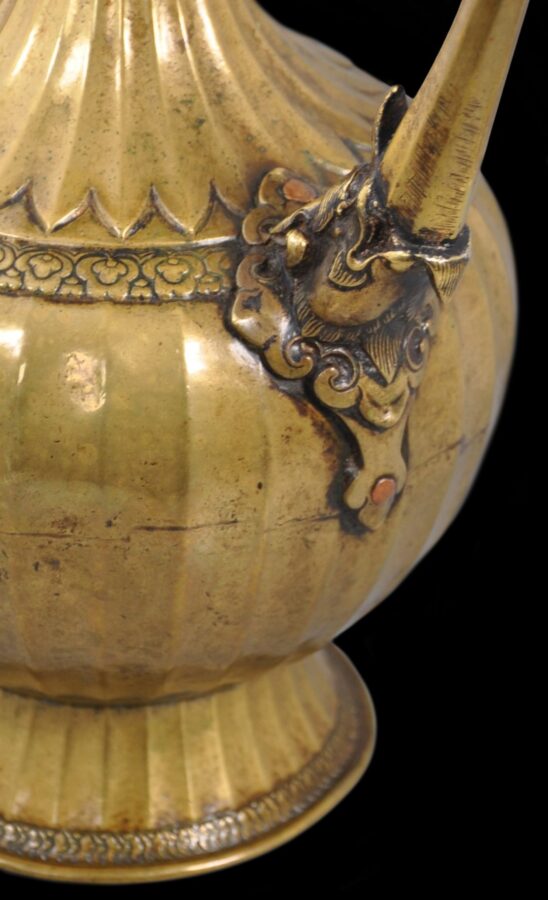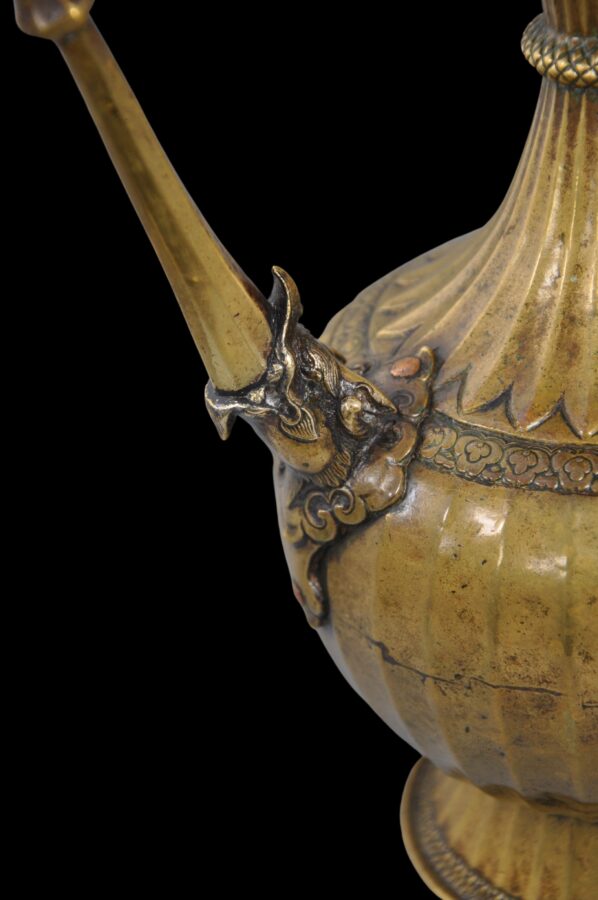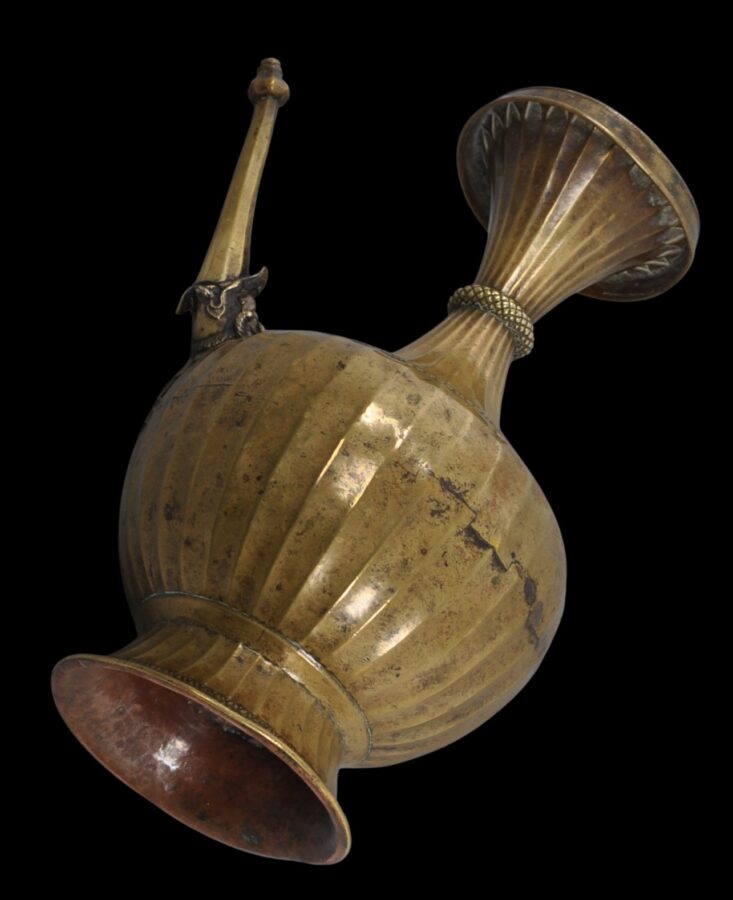Enquiry about object: 9793
Nepalese Spouted Brass Ritual Ewer (Dhalacha)
Newar People, Kathmandu Valley, Nepal 17th century
height: 28.1cm, width: 15.3cm, length (including spout): approximately 20cm, weight: 1,180g
Provenance
private collection, UK
This tall, elegant, spouted brass vessel, known as a dhalacha, is from the Newar people of the Kathmandu Valley in Nepal. It is beautiful for its proportions and glowing patina.
It has an onion-shaped body, sits on a flared, ring foot, has a long, tapering neck that opens to a wider mouth, and has a thin spout which emerges from the gaping mouth of a makara-like creature known as the barun naga. The neck of this creature fans out and acts as a leafy attachment to the body of the vessel.
The body, neck and foot are all finely fluted, giving the vessel a particularly attractive and sculptural quality.
Most dhalacha are plain and without ornamentation. This example therefore is better than most. Friedman (2000) illustrates several refined examples that are similarly decorative.
A related brass example of similar construction is illustrated in Pal (1991, p. 63). That example is inscribed in Newari and with a date that approximates to 1675AD.
A similar but possibly later example is in the Metropolitan Museum of Art.
Such vessels were used during Newari religious and cultural festivals such as weddings and celebrations to mark the birth of a child, for storing and serving chhang (barley beer), raksi, a distilled spirit, and sometimes sacred water.
The vessel will be passed from person to person so that they can partake of the liquid inside, and so the shape with its narrow neck allowing a good grip, is perfect for this purpose.
Dhalacha vessels are also used for storing sacred water. The shape is particularly useful for the effective lustration of adherents and deities.
The form and the style of decoration relate to similar vessels from Mughal, northern and Deccan India for the 17th and 18th centuries.
The dhalacha has a golden patina. The foot and mouth have become mis-shaped with use and time, adding to its sense of antiquity.
References
Friedman, M.S., Nepalese Casted Vessels, Decanters & Bowls, Pilgrims Publishing, 2000.
Pal, P., Art of the Himalayas: Treasures from Nepal and Tibet, Hudson Hills Press, 1991.
Zebrowski, M., Gold, Silver & Bronze from Mughal India, Alexandria Press, 1997.


